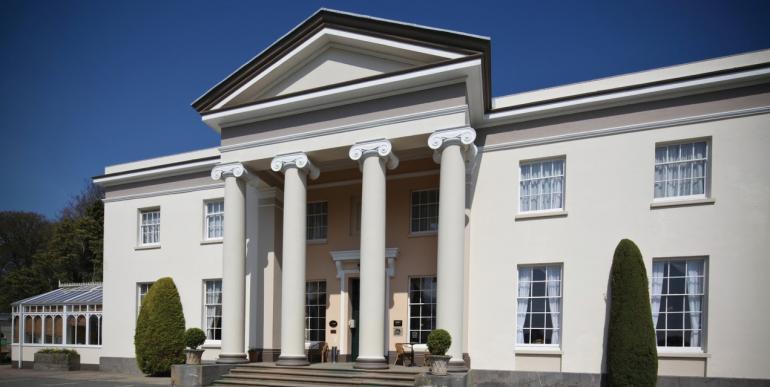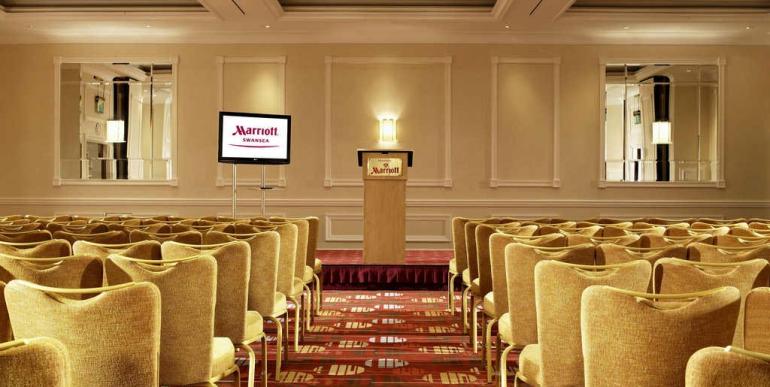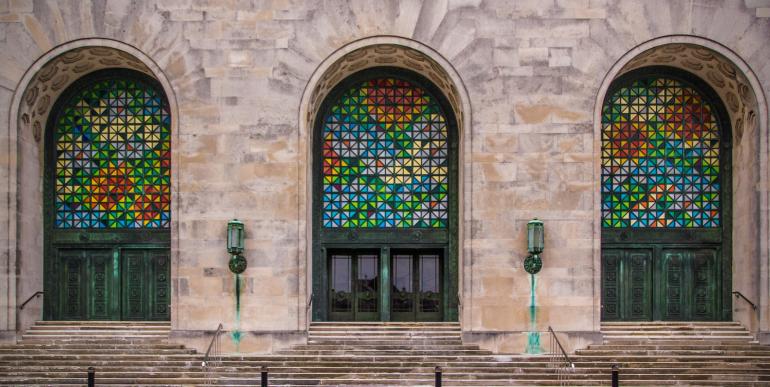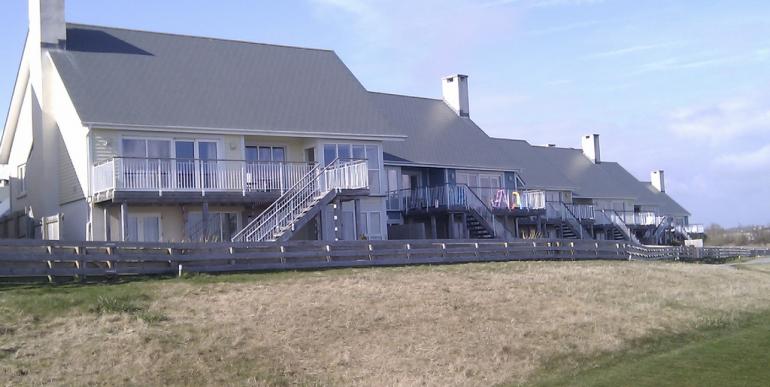The south western part of Wales provides its most southerly connection with the Republic of Ireland. Across St. George's Channel are regular sailings to Rosslare from Pembroke Dock and Fishguard. At its most westerly point is the Pembrokeshire Coast as well as the two coastal towns. To the more easterly part of the south west of Wales is the Gower peninsula, the city of Swansea and Port Talbot.
Swansea was granted City Status in 1969 and is by far the largest urban area of south west Wales. Its early fortune came about in the 19th Century, when it was a key centre of the copper industry. Its maritime location was a bonus, owing to trading links with Devon, Cornwall and Somerset. The city's famous son is poet Dylan Thomas, where as visitor centre celebrates his works. This is close to the recently revamped western docks, known as the Maritime Quarter. With fast rail services and the M4 motorway being close by, Swansea is a good alternative conference venue to Cardiff, where city centre location matters.
West of Swansea is the Gower Peninsula which includes The Mumbles, where its pier is popular with anglers. There is a number of villages and small towns such as Caswell Bay, Three Crosses and Southgate. Caswell Bay is a noted centre for surfers and its popularity is reflected by nearby campsites and hotels. Just west of the Gower Peninsula is Llanelli, an industrial town famed for its Rugby Union and coal mining heritage. Just outside, in Felinfoel is the town's Felinfoel Brewery, whose biggest claim to fame was the invention of canned beer.
Opposite The Mumbles and on the other side of the River Neath is Port Talbot. Another metal put the town on the map: steel. The Margam steelworks is one of the largest in Europe. Close to Port Talbot is Aberavon, which looks out to Swansea Bay, Briton Ferry and Neath.
Further west is Carmarthan, the county town of Carmarthanshire. It is a well appointed place with a recently opened market hall and a leisure development, including a multi-screen cinema. There is also a castle, where the existing site dates from 1105. A few miles east off the A48, is the National Botanic Garden of Wales. Its Great Glasshouse was designed by Foster and Partners and it's an attractive centrepiece to the gardens. If your idea of a conference venue involves plants and flowers, this is the ideal place.
Further south is the Pembrokeshire coast, which includes the much loved seaside resort of Tenby. The town has unspoilt beaches with Victorian and Medieval landmarks. It is popular with artists and families. Nearby, the county town of Pembroke is famed for its castle and port, which is situated in the neighbouring town of Pembroke Dock. There are regular sailings to the Republic of Ireland. Opposite is the port town of Milford Haven. Originally noted for shipbuilding and fishing, it became an important centre for the petrochemical industry. The LNG terminal has given the port a fillup, with an additional terminal on the site of the Esso refinery at South Hook.
Further north are the towns of Haverfordwest and Fishguard. Haverfordwest is a mainly medieval town famed for its castle. It is also a regional shopping centre for the Pembrokeshire area, though recent development has had its critics. Its castle was built in 1120 and 1290, during the Norman times. Fishguard is a small town and South Wales' second link with the Republic of Ireland. Both Haverfordwest and Fishguard are within the Pembrokeshire National Park, Britain's only coastal National Park. On one of the most western parts of Pembrokeshire is the city St. David's. With its cathedral, it is the smallest city in the United Kingdom with only 1,797 residents.
Sports-wise, South West Wales is home to The Gulls, Swansea City; other footballing sides include Port Talbot Town, Carmarthan Town and Afon Lido. Devotees of the ovoid game created by William Webb-Ellis have Swansea RFC and Llanelli Scarlets to name a few. Swansea is also home to the Glamorgan County Cricket Club, where Garfield Sobers hit six sixes in a single over.
By road, the south western part of Wales is connected to London and the rest of the UK's motorway network via the M4, A48 and A40. From London Paddington and Manchester Piccadilly railway stations, regular trains continue to Swansea, Milford Haven, Fishguard and Pembroke Dock. Regular sailings to Rosslare [Republic of Ireland] depart from Pembroke Dock and Fishguard with connecting trains to the two ports.
With the choice of urban Swansea, historic Haverfordwest and picturesque Tenby, South West Wales has a lot to offer as a conference venue. If you have delegates coming in from the Republic of Ireland, its ferry connections are a real boon.





